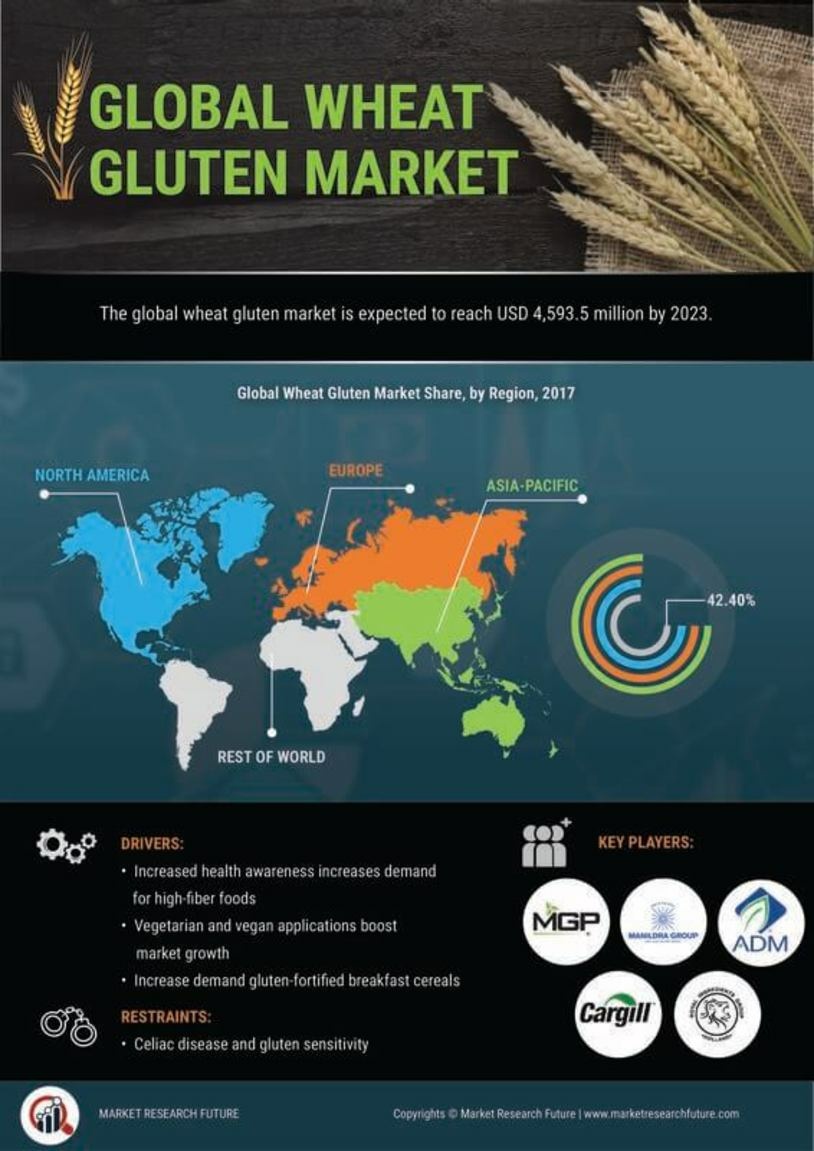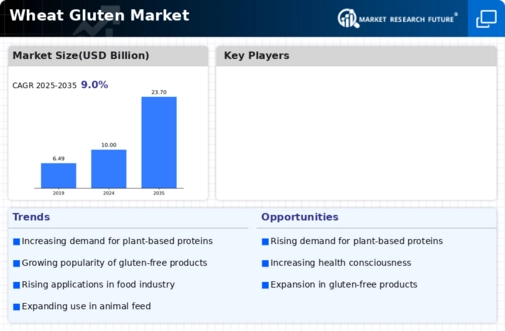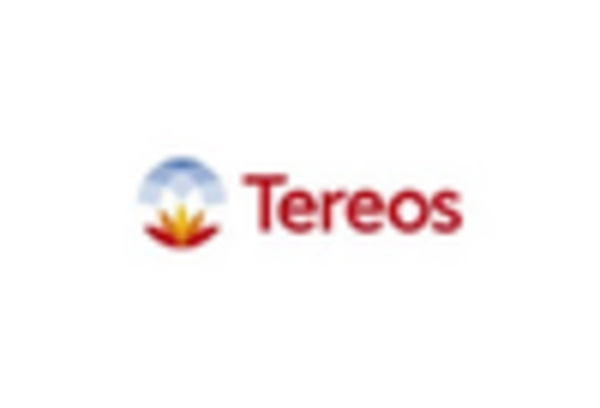Expansion of the Bakery Sector
The Wheat Gluten Market is closely linked to the expansion of the bakery sector, which continues to thrive due to changing consumer preferences. The demand for artisanal and specialty breads has surged, leading to an increased use of wheat gluten as a vital ingredient for enhancing dough strength and elasticity. Market data suggests that the bakery segment accounts for a substantial share of the wheat gluten market, with projections indicating a growth rate of around 5% annually. This trend is further supported by the rise in gluten-free alternatives, as manufacturers seek to balance traditional offerings with innovative products. Consequently, the Wheat Gluten Market is poised to benefit from the bakery sector's ongoing evolution and diversification.
Increasing Health Consciousness
The Wheat Gluten Market is experiencing a notable shift as consumers become increasingly health-conscious. This trend is reflected in the rising demand for high-protein, low-fat food options, which wheat gluten provides. As a key ingredient in various health-oriented products, wheat gluten is favored for its nutritional profile, particularly among those seeking plant-based protein sources. The market data indicates that the health food segment is projected to grow significantly, with a compound annual growth rate (CAGR) of approximately 7% over the next five years. This growth is likely to be driven by the increasing prevalence of dietary restrictions and the desire for healthier lifestyle choices, positioning the Wheat Gluten Market favorably in the evolving food landscape.
Rising Popularity of Meat Alternatives
The Wheat Gluten Market is witnessing a surge in demand for meat alternatives, driven by the growing trend of plant-based diets. Wheat gluten, often used in the production of meat substitutes such as seitan, is gaining traction among consumers seeking healthier and more sustainable protein sources. Market analysis indicates that the meat alternatives segment is expected to grow at a CAGR of approximately 8% over the next few years, reflecting a significant shift in dietary habits. This trend is likely to be fueled by increasing awareness of the environmental impact of meat consumption and the health benefits associated with plant-based diets. As a result, the Wheat Gluten Market stands to gain from the expanding market for meat alternatives.
Technological Advancements in Food Processing
The Wheat Gluten Market is benefiting from technological advancements in food processing, which enhance the efficiency and quality of wheat gluten production. Innovations such as improved extraction methods and processing techniques are enabling manufacturers to produce higher-quality gluten with better functional properties. This is particularly relevant in the context of the food industry, where the demand for consistent and high-performance ingredients is paramount. Market data suggests that investments in food processing technologies are expected to increase, potentially leading to a more competitive landscape within the Wheat Gluten Market. As these advancements continue to evolve, they may contribute to the overall growth and sustainability of the industry.
Growing Demand for Ethically Sourced Ingredients
The Wheat Gluten Market is increasingly influenced by the growing demand for ethically sourced ingredients. Consumers are becoming more discerning about the origins of their food, leading to a preference for products that align with sustainable and ethical practices. This trend is particularly evident in the food sector, where transparency in sourcing is becoming a key purchasing factor. Market Research Future indicates that brands that prioritize ethical sourcing are likely to capture a larger share of the market, as consumers are willing to pay a premium for products that reflect their values. Consequently, the Wheat Gluten Market may experience growth as manufacturers adapt to these changing consumer expectations and enhance their sourcing practices.


















Leave a Comment